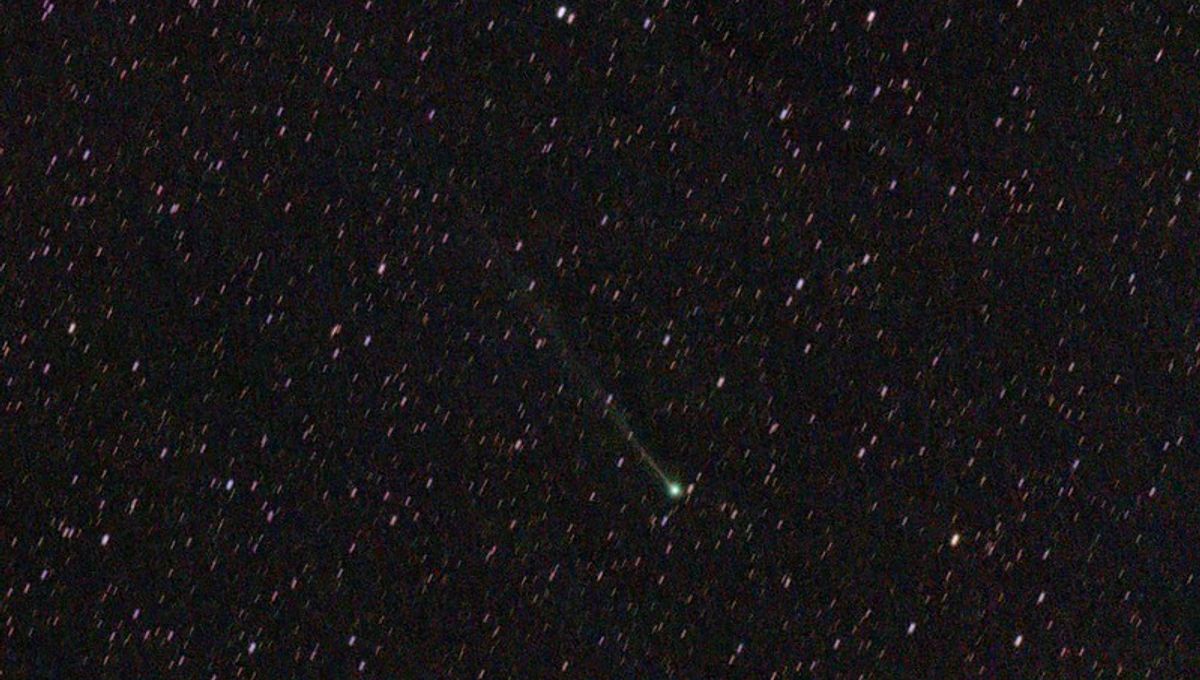
We have been moderately lucky with comets in the last several months. We had Comet Tsuchinshan-ATLAS last October shining across the sky for weeks, visible to the naked eye, having survived a dangerous close encounter with the Sun. That chance now lies with C/2025 F2 (Swan), although it’s not expected to get as bright.
The comet was discovered by three citizen scientists, Vladimir Bezugly, Michael Mattiazzo, and Rob Matson, in quite an unusual way. They were not looking at the sky but at images taken by the Solar and Heliospheric Observatory. They were looking at the data from the Solar Wind Anisotropies instrument (Swan), and independently, they reported the presence of the comet between March 29 and 31.
The comet brightened pretty quickly, and it now has a magnitude of +7.8 – not bright enough for our own eyes, but visible with a small telescope or binoculars. But the best is yet to come, since the comet has not reached its closest point to the Sun just yet. That’s going to be on May 1, as the comet will reach just within the orbit of Mercury.
Currently, the comet can be seen in the morning before sunrise in an east-to-northeast direction, as well as right after sunset, low on the horizon. Over the next 10 days or so, it will get higher from the horizon in the evening, making it easier to see at more convenient hours, which works great, given that it will also get brighter. Current estimations suggest that it might get to magnitude +5.5, putting it in the visible to the naked eye range.
As far as astronomers can tell, it is not estimated to get brighter than that, but it might have outbursts that we can’t simply predict. Its current brightness suggests that this is a large comet, not at the level of the “megacomets” but certainly enough to survive the close passage. The size might make it easier for non-destructive outbursts.
So far, the comet has not released much dust. In fact, it is shining a green color just like Comet Nishimura of 2023, which was dubbed the “green comet” for just how green it was. The emerald hue is caused by diatomic carbon, a clear sign that the comet’s coma (the fuzzy atmosphere of the comet) is richer in gas than in dust.
You can check the position of Comet C/2025 F2 (Swan) here.
Source Link: New Comet C/2025 F2 (SWAN) Is About To Face The Sun And Should Soon Be Visible To The Naked Eye